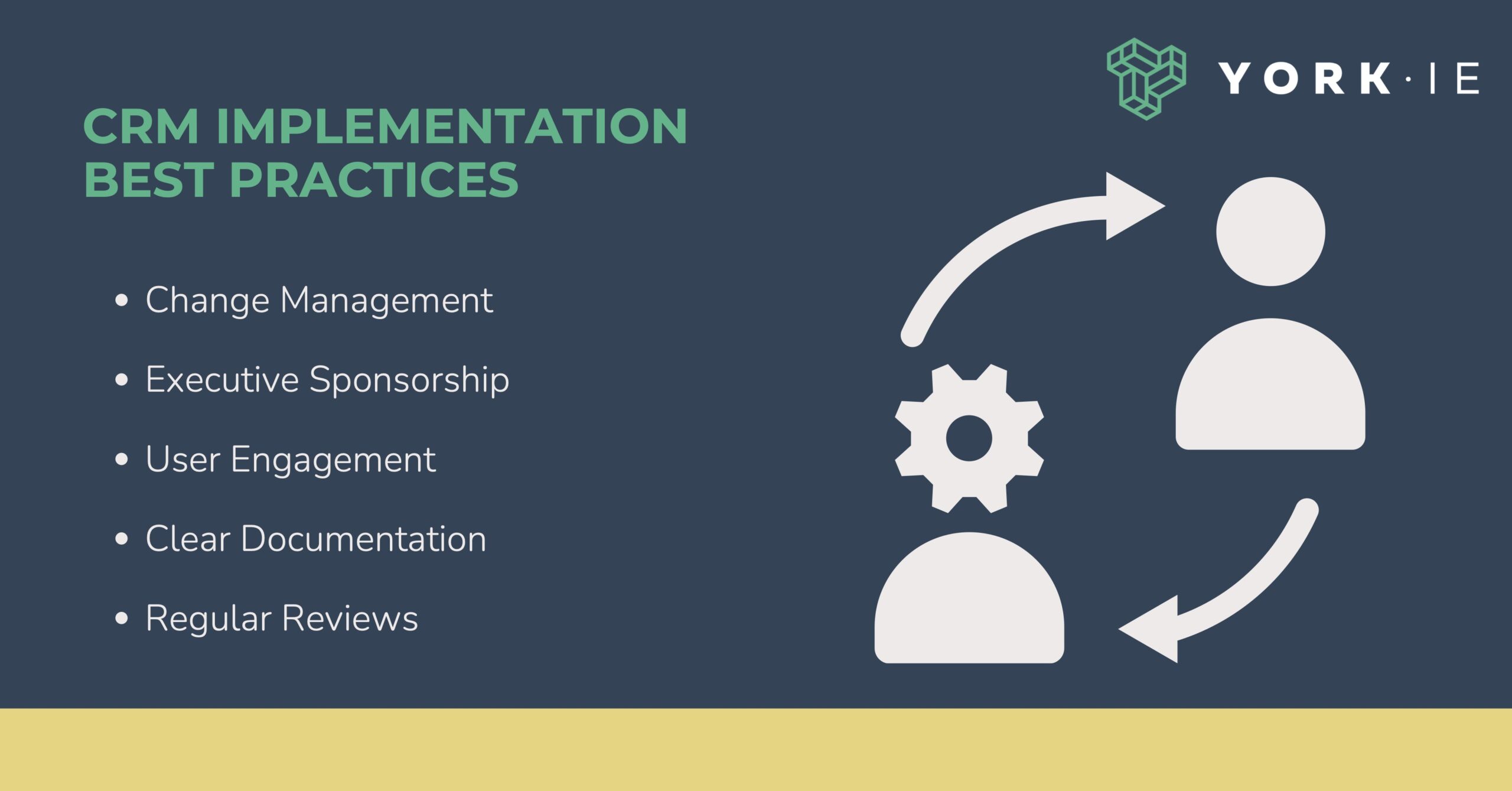A CRM implementation guide can help your company gain maximum value from your CRM software from day one.
A customer relationship management (CRM) system should be a foundational element of your company’s tech stack as you scale. Many companies view their CRM as the central hub of their marketing, sales and customer service activities.
The right CRM can help optimize the entire customer journey: identifying and nurturing leads, turning prospects into customers and delivering the best experience to those clients. It’s all about achieving a smooth process; 78% of sales leaders report that their CRM improved alignment between their sales and marketing teams.
It’s important to nail the CRM implementation process, but not every fast-growing technology company gets it right. The complexities of implementation mean that many CRM projects fail to achieve their desired outcomes.
In my nearly 20 years in the technology world, I’ve helped lead several CRM selection and implementation projects. I served as CTO of Forcivity, a full-service CRM consultancy and systems integrator, and now work as part of the York IE advisory services team that guides CRM implementation projects for early-stage technology companies.
In this blog post, we’ll outline the process and go through some key CRM implementation steps. Don’t forget to download our free CRM implementation guide to help you get started.

What Is the CRM Implementation Process?
The CRM implementation process is the exercise of launching a new CRM platform and ensuring it smoothly integrates with the existing workflows of an organization. The process includes assessing a company’s sales, marketing and customer service needs, and carefully implementing the CRM in a way that helps optimize these operations.
A successful CRM implementation helps create a customized environment that reflects the specific requirements of an organization and its customers.
What Are the 5 Keys to Successful CRM Implementation?
The keys to successfully implementing your CRM are:
- change management
- executive sponsorship
- user engagement
- clear documentation
- regular reviews
Change Management
Implementing a new CRM will likely bring wholesale changes to your sales, marketing and customer service operations. Consistent communication with colleagues is key. The leader of the implementation process should clearly communicate the benefits of the new CRM and involve end users in the process to navigate this change.
Executive Sponsorship
It’s important to secure buy-in from company leaders before launching your CRM. Executives can help drive the initiative and address any concerns or questions from employees. They can also provide big-picture thoughts on business growth goals to inform the implementation strategy.
User Engagement
The most important people in any implementation project are the users who will rely on the CRM daily. Provide them with regular updates on the status of the project. Offer training sessions to help users get up to speed. Recognize their feedback and adjust your implementation process accordingly.
Clear Documentation
CRM implementations are complex and include multiple steps. It’s often helpful to maintain clear and detailed documentation of processes, configurations and ownership over different aspects of the platform. Some CRMs have internal documentation tools to keep your notes in order. You could also document the process in a project management tool such as Notion or within a shared Google Doc.
Regular Reviews
High-growth companies are constantly learning as they scale. A CRM implementation process should reflect this iterative culture. Conduct regular reviews during and after your implementation to ensure your platform is meeting the needs of your business, users and customers.
What Are the Steps of CRM Implementation?
The 8 CRM implementation steps are:
- Define objectives and goals.
- Assemble a project team.
- Select the right CRM.
- Customize the CRM.
- Migrate your data.
- Conduct user and quality assurance testing.
- Train and onboard team members.
- Review post-implementation results.
1. Define objectives and goals
Clearly define what you hope to achieve with the platform. Will you focus on increasing marketing leads? Boosting sales efficiency? Refining your attribution model and setting up dashboards for your RevOps team? Selecting your primary focus areas will help you choose the right CRM and customize it to align with your goals.
2. Assemble a project team
You’ll want some different perspectives and voices as you follow these CRM implementation steps. Appoint a project manager to oversee the implementation process. This could be a sales or marketing leader, a technical or IT specialist or some combination. Include key stakeholders that will use the CRM once it’s implemented. Achieving their buy-in is important.
3. Select the right CRM
Selecting the best CRM for you comes down to factors such as budget, features and user interface. At York IE, we often recommend HubSpot to our technology company clients, as it offers a friendly user interface and versatility across marketing, sales and customer service. Check out our blog post on choosing the right CRM if you’re looking for a deeper dive.
We recommend requesting a demo or conducting a free trial period for any CRM you’re considering.
4. Customize the CRM
With your CRM selected, it’s time to focus on planning your implementation. Develop a realistic timeline; we recommend a phased approach that allows for constant review. Our CRM implementation guide can help you map out your strategy.
Define your current workflows and processes, and decide how your CRM can help augment these operations. Outline your user roles and permissions. Set up integrations with your existing tools and systems, including email, marketing automation and accounting.
5. Migrate your data
Your contact data exists somewhere prior to implementing your CRM: a spreadsheet, document or within your email. Create a detailed plan to migrate your data from any existing systems to the new CRM and map those fields accordingly. Conduct a test migration to identify and resolve any issues before migrating all of your data.
6. Conduct user and quality assurance testing
We can call this the soft launch phase of the implementation. Your goal is to ensure all of the CRM’s features work as expected and address any bugs or issues. This is where your project team can help. Conducting quality assurance and user acceptance testing with the CRM’s users will help you validate that the new system addresses their needs.
7. Train and onboard team members
Here’s where you hard launch the CRM and get everyone up to speed. If you’ve built a diverse project team, they can help address questions within their department or focus area. Ensure ongoing support is available for users. Most CRMs offer comprehensive resource guides, and you’ll likely have access to a customer service expert who can guide you along the way.
8. Review post-implementation results
Any successful CRM implementation process is iterative. Gather feedback from users to see what can be improved. Measure the CRM against your predefined goals. As you analyze this data, implement changes and enhancements to keep your system operating to its full potential.
The right CRM can be transformational for your organization; 45% of companies say their CRM platform has helped increase sales revenue. Especially as a fast-growing company, you want to see those benefits right away.
These CRM implementation steps should help guide your team as you select and launch your new platform. Remember that any successful CRM implementation is a collaborative process; stay in constant communication with your colleagues and bring together employees from sales, marketing, customer service and technical backgrounds.
A great CRM can unlock the potential of your go-to-market team. Best of luck getting yours up and running!



